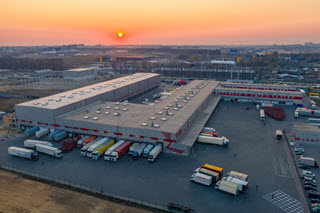Summary
The news about the COVID-19 vaccines is something to cheer about. Although the science that created the vaccines is truly transforming, success will now depend on dominating some complex logistics generated by the inherent characteristics of the vaccine and delivery. I use the term logistics, often used in the 1980s, in its broadest meaning covering all aspects of the decision tiers from production and capacity planning to an actual inoculation (shot). This is from my experience with complex logistics in manufacturing in industries such as the semiconductor industry and the chemicals/process industry. This blog discusses a few of the logistics challenges from the perspective of an industry expert with lots of time in the trenches. With all due respect to public health and government experts, their experience cannot match those with substantial time and proven success in these industries. Arkieva is ready to help Delaware.
Introduction
Over the past 8 weeks, there has been good news about COVID-19 such as: (1) a far better understanding of how to control the spread with more surgical precision and risk management; (2) vastly improved medical practices to reduce the fraction of deaths, serious illness, and length of hospital stays; and (3) emerging vaccines. The offsetting downside for (1 and 2) is the current surge in hospitalizations impacting COVID-19 patients and non-COVID-19 patients. The offsetting news for (3) is logistical challenges for vaccine inoculations. This has generated twin operations management challenges to (a) ward off the near-term health, economic, and social impact of COVID-19 and (b) secure a COVID-19 free future through successful vaccinations. Although the science that created the vaccines is truly transforming, building on 40 years of research, success will now depend on dominating some complex logistics generated by the inherent characteristics of the vaccine and delivery.
I use the term logistics, often used in the 1980s, in its broadest meaning covering all aspects of the decision tiers from production and capacity planning to an actual inoculation (shot). In reading about the challenges, it was clear, although the logistics were complex, they were substantial experience with more complex logistics in manufacturing – for example, the semiconductor industry (the chips produced that make cell phones, internet, clouding computing, automobiles, etc. possible) and chemicals/process industry. With all due respect to public health and government experts, their experience cannot match those with substantial time and proven success in the trenches for these industries. Arkieva is ready to help Delaware.
In the rest of the blog, I outline some “vaccine challenges” that Gary Sullivan enumerated in a quick discussion based on his successful “logistics” career at IBM overcoming the complex – successes that altered the state of best practices in logistics.
General Observations
Gary’s first observation was as this process moves from “engineering development” (early production and the initial clinical trials) to full production and distribution, surprises will emerge. This requires a monitoring system to find the surprises quickly and then the ability to respond quickly.
His second was the need to capture the data required to support analysis of effectiveness across time. Obviously, the effectiveness of the vaccine, but the effectiveness of the logistics process. Analytic tools from optimization to machine learning are worthless without good data. It would be easy to not attend this early on when the only metric that will be focused on is the number of people vaccinated.
These require computational tools far more robust than Excel, but an infrastructure that ensures rapid adjustment and supports a loosely coupled distribution process.
Process Time or Yield Windows.
In the semiconductor manufacturing process time windows are abundant – sometimes referred to as the hidden menace. In a process window, once the wafer (primary production unit or widget) begins an operation, it must finish a set of operations within a fixed period, or the wafer (for the vaccine the active agent) must be scrapped. See patent 7,305,276 on “extended zone of control”. These windows carry planning and scheduling challenges. There are a number of such windows in vaccine delivery.
The shelf life of active agent – long time window.
The shelf life of a vial of the active agent for the COVID-19 vaccine has a long shelf-life in proper storage, however the failure to store properly requires the vaccine to be scrapped.
The active agent removed from long term storage – Short Process Time Window.
Once the vial or active agent is removed from storage, it must be used within a short period of time or discarded. This means all the “regular stuff” needed for inoculation must be in place in a coordinated manner. This regular stuff includes: the fluid mix, the syringe, a person to execute the injection, a patient, and post patient monitoring.
Second injection – moderate length time window.
For the vaccine to be effective, two injections are required within a fixed amount of time apart (for example 21 days). If the second inoculation is not given, the first was a complete wash. Another wrinkle that may emerge is it is best if the second injection is from the same batch as the first.
Windows are not binary.
It may well be the effectiveness of the vaccine is not binary (before expiration it is fine, immediately after the expiration date it is a dud), but a decay curve.
Moderate Length Window.
There is no point in giving the first injection if the second injection cannot be given. It may be preferable that the second is from the same batch as the first.
Other items:
- Demand priorities.
- Location of the invention. This is a multi-echelon question. It is unlikely pushing product as far down the network as possible is optimal. There will also be territorial control issues.
- Set management – must have the active agent, liquid, syringe, personal, and the patient to execute – sure I missed some other items.
- Capacity planning, not just for freezers, but the other items – has to be joint capacity planning.
- Assuming this is done at a health care center, account for interaction with other pharm activities – injections and IV drips.
- Delivery/transport schedule.
- Ability to collect longitudinal data that must deal with privacy and other health care systems. Clinical testing is notoriously limited (sorry to say).
- Billing and cost recovery.
- Handling no-shows to receive the vaccine.
- Adjusting the vaccination process with respect to the level of COVID-19 that is active.
Conclusion
The news about the COVID-19 vaccines is something to cheer about. Although the science that created the vaccines is truly transforming, success will now depend on dominating some complex logistics generated by the inherent characteristics of the vaccine and delivery. I use the term logistics, often used in the 1980s, in its broadest meaning covering all aspects of the decision tiers. It is clear the experience with complex logistics in manufacturing in industries such as semiconductors and chemical/process should be harnessed to support this national challenge.
Enjoyed this post? Subscribe or follow Arkieva on Linkedin, Twitter, and Facebook for blog updates.





